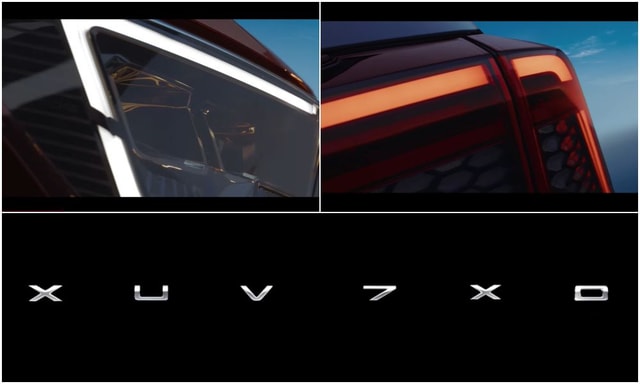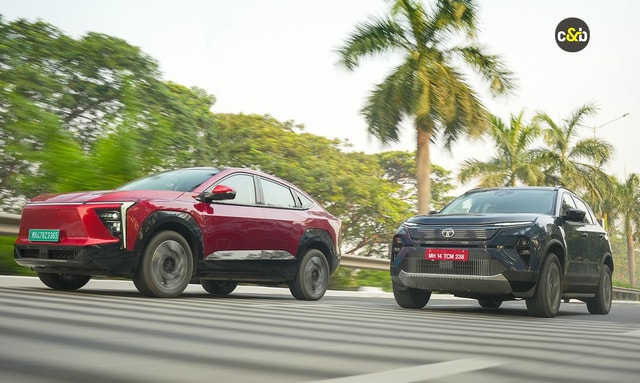New Tech To Boost Hybrid Car Efficiency By Over 30 Per cent

- An Energy Management System is developed and simulated by Qi and his team
- The EMS combines vehicle connectivity information and algorithms
- Goal is to revolutionise the PHEV EMS to achieve greater fuel saving
PHEVs, which combine a gas or diesel engine with an electric motor and a large rechargeable battery, offer advantages over conventional hybrids because they can be charged using mains electricity, which reduces their need for fuel, said researchers at the University of California, Riverside in the US.
However, the race to improve the efficiency of current PHEVs is limited by shortfalls in their energy management systems (EMS), which control the power split between engine and battery when they switch from all-electric mode to hybrid mode.
While not all plug-in hybrids work the same way, most models start in all-electric mode, running on electricity until their battery packs are depleted, then switch to hybrid mode. Known as binary mode control, this EMS strategy is easy to apply, but is not the most efficient way to combine the two power sources.
In lab tests, blended discharge strategies, in which power from the battery is used throughout the trip, have proven more efficient at minimising fuel consumption and emissions.
However, their development is complex and until now they have required an unrealistic amount of information upfront. "In reality, drivers may switch routes, traffic can be unpredictable, and road conditions may change, meaning that the EMS must source that information in real-time," said Xuewei Qi, a postdoctoral researcher at UCR's Centre for
Environmental Research and Technology (CE-CERT). The highly efficient EMS developed and simulated by Qi and his team combines vehicle connectivity information, such as cellular networks and crowd-sourcing platforms, and evolutionary algorithms - a mathematical way to describe natural phenomena such as evolution, insect swarming and bird flocking.
"By mathematically modelling the energy saving processes that occur in nature, scientists have created algorithms that can be used to solve optimisation problems in engineering," Qi said.
"We combined this approach with connected vehicle technology to achieve energy savings of more than 30 per cent. We achieved this by considering the charging opportunities during the trip - something that is not possible with existing EMS," said Qi.
Together with the application of evolutionary algorithms, vehicles will not only learn and optimise their own energy efficiency, but will also share their knowledge with other vehicles in the same traffic network through connected vehicle technology. "Even more importantly, the PHEV energy management system will no longer be a static device - it will actively evolve and improve for its entire life cycle. Our goal is to revolutionise the PHEV EMS to achieve even greater fuel savings and emission reductions," Qi said. The research was published in the journal IEEE Transactions on Intelligent Transportation Systems.
(This story has not been edited by NDTV staff and is auto-generated from a syndicated feed.)
Trending News
Latest News
 Jaiveer Mehra | Dec 8, 20252026 Mercedes-Benz GLB SUV Makes Global Debut; EV Offers Up To 631 km RangeThe second-gen GLB is larger than its predecessor and will become available in both EV and internal combustion derivatives in the coming months.4 mins read
Jaiveer Mehra | Dec 8, 20252026 Mercedes-Benz GLB SUV Makes Global Debut; EV Offers Up To 631 km RangeThe second-gen GLB is larger than its predecessor and will become available in both EV and internal combustion derivatives in the coming months.4 mins read Jaiveer Mehra | Dec 8, 2025FADA Sales Nov 2025: GST Benefits, Discount Offers Push Post Festive Season Sales; Auto Industry Reports 2 Per Cent GrowthAs per FADA, the peak festive season vehicle registrations ended in October 2025, as against November 2024 last year, putting November vehicle sales against a higher base.4 mins read
Jaiveer Mehra | Dec 8, 2025FADA Sales Nov 2025: GST Benefits, Discount Offers Push Post Festive Season Sales; Auto Industry Reports 2 Per Cent GrowthAs per FADA, the peak festive season vehicle registrations ended in October 2025, as against November 2024 last year, putting November vehicle sales against a higher base.4 mins read car&bike Team | Dec 8, 2025Mahindra XUV 7XO (XUV700 Facelift) To Debut On January 5, 2026: Watch The First TeaserOver four years on from the launch of the original, the XUV700 facelift will arrive with a new name and more than a few cues borrowed from the recently launched XEV 9S electric SUV.2 mins read
car&bike Team | Dec 8, 2025Mahindra XUV 7XO (XUV700 Facelift) To Debut On January 5, 2026: Watch The First TeaserOver four years on from the launch of the original, the XUV700 facelift will arrive with a new name and more than a few cues borrowed from the recently launched XEV 9S electric SUV.2 mins read car&bike Team | Dec 7, 2025Harley-Davidson CVO Road Glide, Street Glide Launched In India; Cost More Than A Toyota FortunerLatest additions to Harley-Davidson's India portfolio are two full imports, headlining the brand's model range, packing the company's Milwaukee Eight VVT 121 V-twin engine.1 min read
car&bike Team | Dec 7, 2025Harley-Davidson CVO Road Glide, Street Glide Launched In India; Cost More Than A Toyota FortunerLatest additions to Harley-Davidson's India portfolio are two full imports, headlining the brand's model range, packing the company's Milwaukee Eight VVT 121 V-twin engine.1 min read car&bike Team | Dec 6, 2025Harley-Davidson X440T Launched At Rs 2.80 Lakh: Here's What's NewJoining the existing (but now repositioned) X440 lineup is the X440T, featuring a new rear subframe, ride-by-wire and switchable ABS.1 min read
car&bike Team | Dec 6, 2025Harley-Davidson X440T Launched At Rs 2.80 Lakh: Here's What's NewJoining the existing (but now repositioned) X440 lineup is the X440T, featuring a new rear subframe, ride-by-wire and switchable ABS.1 min read car&bike Team | Dec 6, 2025Tata Sierra Variant-Wise Prices Revealed: Check Out How Much Pure And Adventure Trims CostIn a surprising move, Tata has decided to keep the prices of the range-topping variants of the new Sierra under wraps for a few more days.3 mins read
car&bike Team | Dec 6, 2025Tata Sierra Variant-Wise Prices Revealed: Check Out How Much Pure And Adventure Trims CostIn a surprising move, Tata has decided to keep the prices of the range-topping variants of the new Sierra under wraps for a few more days.3 mins read
 Bilal Firfiray | Dec 8, 2025Tata Sierra Review: India’s New Favourite?Marking its return after a few decades, the reborn Sierra has made everyone sit up and take notice. But is it worth the hype?10 mins read
Bilal Firfiray | Dec 8, 2025Tata Sierra Review: India’s New Favourite?Marking its return after a few decades, the reborn Sierra has made everyone sit up and take notice. But is it worth the hype?10 mins read Girish Karkera | Dec 4, 20252026 Honda Prelude First Drive: Domesticated Civic Type RA sporty-looking coupe built to give customers a taste of performance but not at the expense of everyday practicality.5 mins read
Girish Karkera | Dec 4, 20252026 Honda Prelude First Drive: Domesticated Civic Type RA sporty-looking coupe built to give customers a taste of performance but not at the expense of everyday practicality.5 mins read Seshan Vijayraghvan | Nov 29, 2025Mahindra XEV 9S First Drive Review: Big Electric SUV, Bigger ExpectationsThe XEV 9S lands at a time when the EV crowd is growing fast. It’s a big, born-electric, three-row SUV that starts under 20 lakh. It sits close to the XUV700 in size, but the brief is very different. Here’s what it’s like on the road.11 mins read
Seshan Vijayraghvan | Nov 29, 2025Mahindra XEV 9S First Drive Review: Big Electric SUV, Bigger ExpectationsThe XEV 9S lands at a time when the EV crowd is growing fast. It’s a big, born-electric, three-row SUV that starts under 20 lakh. It sits close to the XUV700 in size, but the brief is very different. Here’s what it’s like on the road.11 mins read Bilal Firfiray | Nov 26, 2025Tata Harrier EV vs Mahindra XEV 9e: Battle Of India’s Electric TitansWhen India made two electric SUVs battle it out, the winner is the buyer. They get a choice to take home what’s best suited for them – and read on to find out which one is better for YOU.1 min read
Bilal Firfiray | Nov 26, 2025Tata Harrier EV vs Mahindra XEV 9e: Battle Of India’s Electric TitansWhen India made two electric SUVs battle it out, the winner is the buyer. They get a choice to take home what’s best suited for them – and read on to find out which one is better for YOU.1 min read Janak Sorap | Nov 19, 2025Hero Xpulse 210 Vs Kawasaki KLX 230 Comparison Review: Dual-Sport DilemmaWith a price difference of just Rs 12,000, which of the two dual-sport motorcycles is meant for you?1 min read
Janak Sorap | Nov 19, 2025Hero Xpulse 210 Vs Kawasaki KLX 230 Comparison Review: Dual-Sport DilemmaWith a price difference of just Rs 12,000, which of the two dual-sport motorcycles is meant for you?1 min read































































































































